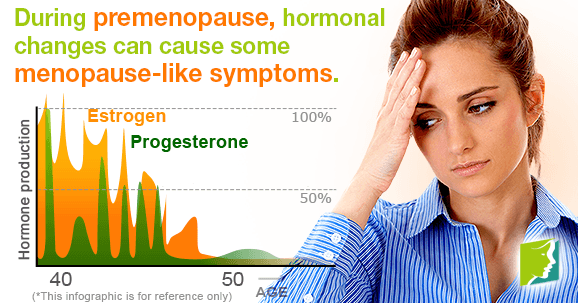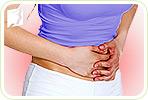Premenopause spans many years of a woman's life, and refers to her fertile years. Typically, premenopause will begin at around the age of 13, when a girl gets her first period, and last until the woman is in her 40s or 50s and sees her first menopause symptoms. During this time, there are many hormonal changes, which can have an effect on a woman's physical and psychological state. Keep reading to find out more about the hormonal changes a woman typically undergoes during premenopause.
What Is Premenopause?
During the premenopause years, a woman will normally experience monthly periods, and these mark the end of a consistent cycle through which the reproductive system goes, after which it will begin again. A typical cycle will last 28 days, but can be slightly shorter or longer, and is caused by changes in the amount of estrogen and progesterone produced. However, these hormonal changes do not just affect the reproductive cycle; they can also have other effects in the body, both physiologically and psychologically.
What Are the Symptoms of the Hormonal Changes?
Some women find that around the time their period is due, they notice changes in their behavior or body, and this is normally termed pre-menstrual syndrome (PMS). Not every woman will suffer from PMS, and among those who do, particular symptoms experienced and their severity can vary dramatically. Some examples of the possible symptoms that can be caused by PMS are:
- Anxiety
- Mood swings
- Irritability
- Difficulty concentrating
- Joint and breast pain
- Headaches
- Fatigue
- Bloating
Most sufferers will only experience a few of these problems, and they do affect everyday life. However, sometimes, symptoms can be so severe that they prevent women from functioning normally. Symptoms will generally disappear within a few days of the period starting.
What Exactly Happens during a Cycle?
The first step begins in the brain - the pituitary gland secretes Follicle stimulating hormone (FSH) and Leuteinizing hormone (LH) into the bloodstream, and these prompt the follicles to release the sex hormone, estrogen. In response to this hormone, the blood lining of the womb gradually thickens.
Once the estrogen level reaches a certain point, a surge of LH is produced, and an egg is released, where it sits in the uterus for a few days, waiting to be fertilized. The body also starts releasing progesterone, a hormone that is needed during pregnancy. If no fertilization occurs, production of estrogen and progesterone cease, and this sudden fluctuation causes the blood to be released from the body, and is also the main cause of PMS.
There are a number of hormonal changes that are constantly occurring throughout the premenopause years, and it is during the times that there is a shift in hormonal levels that a woman will experience physical and emotional changes. These changes will typically only last a few days, and are sometimes predictable, but can also occur unexpectedly.
Sources
- Feminist Women's Health Center. (2012). Menstrual Cycles: What Really Happens in those 28 Days?! Retrieved August 12, 2014, from http://www.fwhc.org/health/moon.htm
- Healthline. (2013). Hormonal Headaches Overview. Retrieved December 9, 2014, from http://www.healthline.com/health/hormonal-headaches#Overview1
- Mayo Clinic. (2012). Premenstrual syndrome (PMS). Retrieved December 9, 2014, from http://www.mayoclinic.org/diseases-conditions/premenstrual-syndrome/basics/definition/con-20020003
- National Institutes of Health. (2012). Premenstrual dysphoric disorder Retrieved December 9, 2014, from http://www.nlm.nih.gov/medlineplus/ency/article/007193.htm
- Office on Women's Health. (2012). Premenstrual syndrome (PMS) fact sheet. Retrieved August 12, 2014, from http://www.womenshealth.gov/publications/our-publications/fact-sheet/premenstrual-syndrome.html#f



